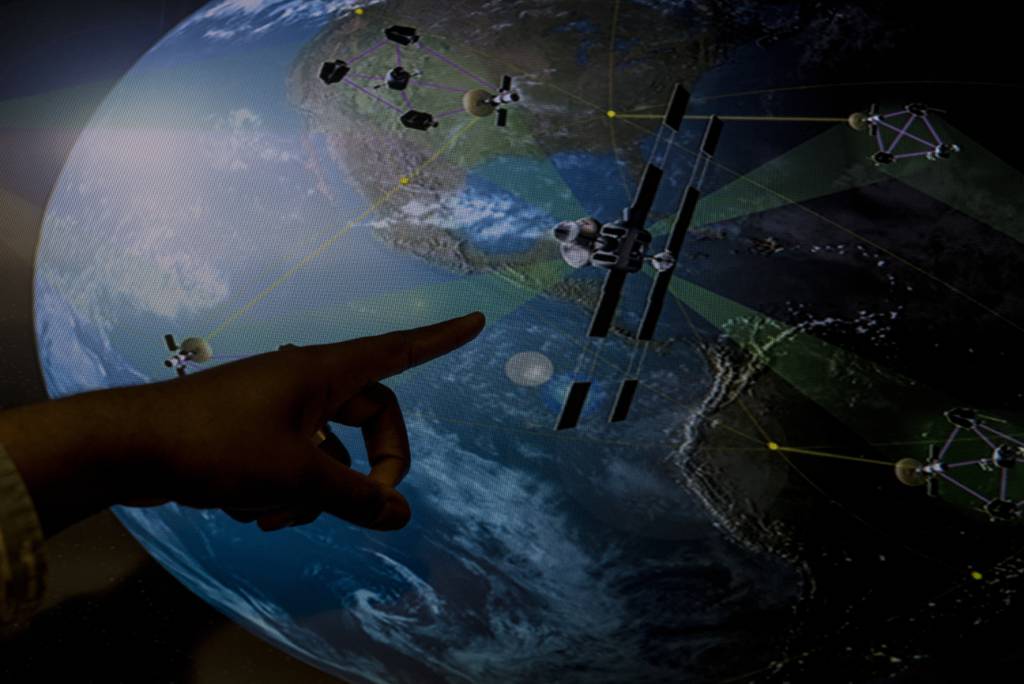Ask any lawyer and they'll say semantics matter. The same can be said in the military. For example, what is the difference between adaptive and cognitive electronic warfare? Does it even matter?
According to the Air Force Science Advisory Board, it does matter. These two terms are used almost interchangeably, said the board's chair, Werner Dahm, at the Pentagon this week in a briefing on the 2016 studies the board examines.
The board's goal is provide the Air Force — and DoD — with independent and scientific insight into operationally relevant problems. While a general officer is assigned to each study as a means of ensuring the independent scientists from outside the government are focusing on operationally relevant aspects, the board's findings serve in an advisory capacity only, unless greater action from leadership is taken based upon findings.
In this particular case, one of the studies the board undertook in 2016 was titled "Responding to Uncertain or Adaptive Threats in Electronic Warfare." According to an abstract, recent developments of software-defined architectures and digital signal processing from adversaries — which play into much-discussed anti-access area denial environments — have rendered inadequate the traditional processes of collecting, assessing, developing and testing countermeasures before fielding.
The study's charter sought to:
- Define current and likely further threat characteristics.
- Survey current state-of-the-art machine learning and adaptive decision-making algorithms.
- Determine the performance that will be realistically achievable in the near, mid- and far-term.
- Identify the most promising avenues of cognitive electronic warfare along with realistic timelines and milestones.
- Recommend integrated demonstrations and transition opportunities for near-, mid- and far-term implementation of cognitive electronic warfare.
Differentiating between different levels of adaptability and true cognitive EW is important, Dahm said, noting it was not one of the study’s major findings. He described cognitive EW as the "Holy Grail," and thus the most difficult to achieve.
True cognitive EW systems, he explained, should be able enter into an environment not knowing anything about adversarial systems, understand them and even devise countermeasures rapidly. Cognition in this space is essentially applying machine learning to make systems smarter, according to Josh Niedzwiecki, director of sensor processing and exploitation at BAE Systems.
These systems, Dahm said, literally stimulate the adversary system, look at what comes back and automatically learn, trying a few waveforms; they are able to very quickly find an effective technique.
Adaptive solutions, conversely, allow for basic operation in these environments, but are not capable of rapid understanding and countermeasures. There are a surprising amount of benefits from relatively simple levels of adaptability in EW systems, Dahm said. These simpler systems are something that’s "no kidding" achievable on time scales of the Air Force, he added, noting that just differentiating those was important.
For the Air Force, it’s all about tightening the cycle time. Part of this demand signal in devising new solutions is being driven by these A2/AD threats, James Chow, vice chair of the board, told reporters. These threats are becoming much more adaptive, meaning the cycle time for responding to them must be much faster.
Dahm emphasized that with many adversary systems, a software change is all that is needed to change the waveforms. The whole study the SAB looked at was predicated on when forces go into a future environment, they can no longer count on having good awareness of what the threat waveform will look like or even the response to a waveform. This has to made up on the fly, he said.
Dahm continued that current systems are adaptive, but there is a loop time that takes years. Niedzwiecki, of BAE, said that in decades past when forces would deploy to a theater and observe a type of jamming signal, frequency, wavelength or bandwidth, troops would collect evidence and take it to a laboratory for analysis and countermeasure development. Months later, a countermeasure or antidote would be programmed in the system and used in theater. The advances in software and reprogrammable radios make this previous paradigm infeasible, he said, leading to a new shift in leveraging machine learning.
This was fine in the Cold War when there were very few adversary systems, Dahm said. Ultimately, the pace of technology advancement is what is going to set how fast this can be done, he noted. But technical implementations must still be identified, he said, adding that to some extent every technology only moves forward as researchers, engineers and scientists can drive it and if they understand what the end goal is — where the sweet spot is — it can be achieved faster than just a board brushed advance.
Mark Pomerleau is a reporter for C4ISRNET, covering information warfare and cyberspace.








